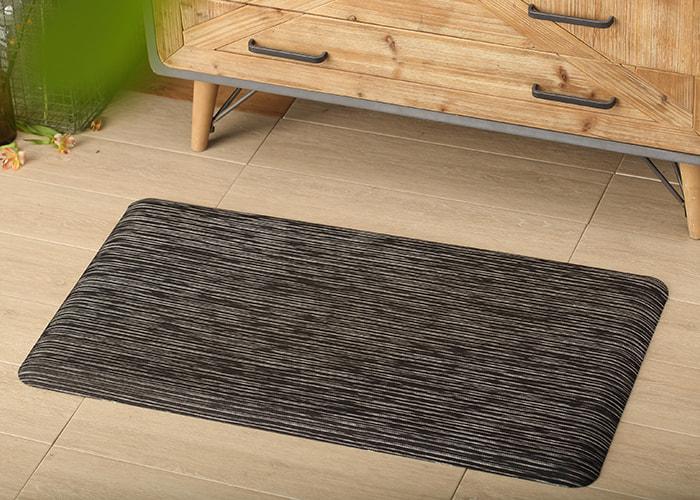In the automotive accessory market, quilted car mats have become a popular choice for both functionality and style. As a manufacturer, I am involved in the entire process of creating these mats, from the initial design to the final product. This article will provide an in-depth look at the manufacturing of quilted car mats, highlighting the steps, considerations, and attention to detail that go into producing a high-quality, comfortable, and durable product.
The manufacturing of foam floor mats starts with the selection of materials. The quilting process requires a combination of a soft, plush top layer, a filler material for insulation, and a sturdy base fabric. As a manufacturer, I choose materials that are not only comfortable and aesthetically pleasing but also durable and resistant to wear and tear. The top layer often consists of a blend of polyester and cotton, while the filler is typically a lightweight, resilient foam. The base fabric is usually made from a heavy-duty material like rubber or PVC, which provides a non-slip surface for the car's floor.
Once the materials are selected, the next step is the cutting process. As a manufacturer, I use computer-aided design (CAD) software to create templates for the mats, ensuring that they fit perfectly within the contours of various car models. The materials are then cut using precision cutting machines, which allow for accuracy and consistency in the size and shape of each mat.
The quilting process is where the magic happens. This involves stitching the top layer, filler, and base fabric together in a pattern that not only adds a decorative touch but also ensures the filler material remains evenly distributed. As a manufacturer, I employ skilled seamstresses who use industrial sewing machines to create the quilted pattern. The quilting process requires a steady hand and a keen eye for detail, as each stitch must be uniform and secure.
After quilting, the car mats undergo a finishing process. This may include adding binding around the edges to prevent fraying and enhance the mats' appearance. As a manufacturer, I ensure that the binding is not only functional but also complements the overall design of the mat.
Quality control is a crucial aspect of manufacturing quilted car mats. Each mat is inspected for any defects, such as uneven stitching, loose threads, or imperfections in the quilting pattern. As a manufacturer, I have a zero-tolerance policy for defects, and any mats that do not meet our standards are either reworked or discarded.
Innovation is always on the horizon in the manufacturing of quilted car mats. As a manufacturer, I continuously explore new materials, designs, and technologies to improve the mats' performance and longevity. This includes researching eco-friendly materials, developing mats with advanced insulation properties, or incorporating features like built-in grommets for better fitment.
Sustainability is a key consideration in the manufacturing process. As a manufacturer, I strive to minimize waste by recycling offcuts and using energy-efficient machinery. The quilted car mats are designed to be long-lasting, reducing the need for frequent replacements and minimizing the environmental impact of production.
In conclusion, the manufacturing of quilted car mats is a meticulous process that combines comfort, style, and durability. As a manufacturer, I take pride in producing mats that not only enhance the driving experience but also stand the test of time. The quilted car mat is a testament to our commitment to quality, innovation, and sustainability, ensuring that they remain a popular choice among car enthusiasts and everyday drivers alike. Each mat is a reflection of our dedication to providing a comfortable and stylish solution for protecting and personalizing the car's interior.
